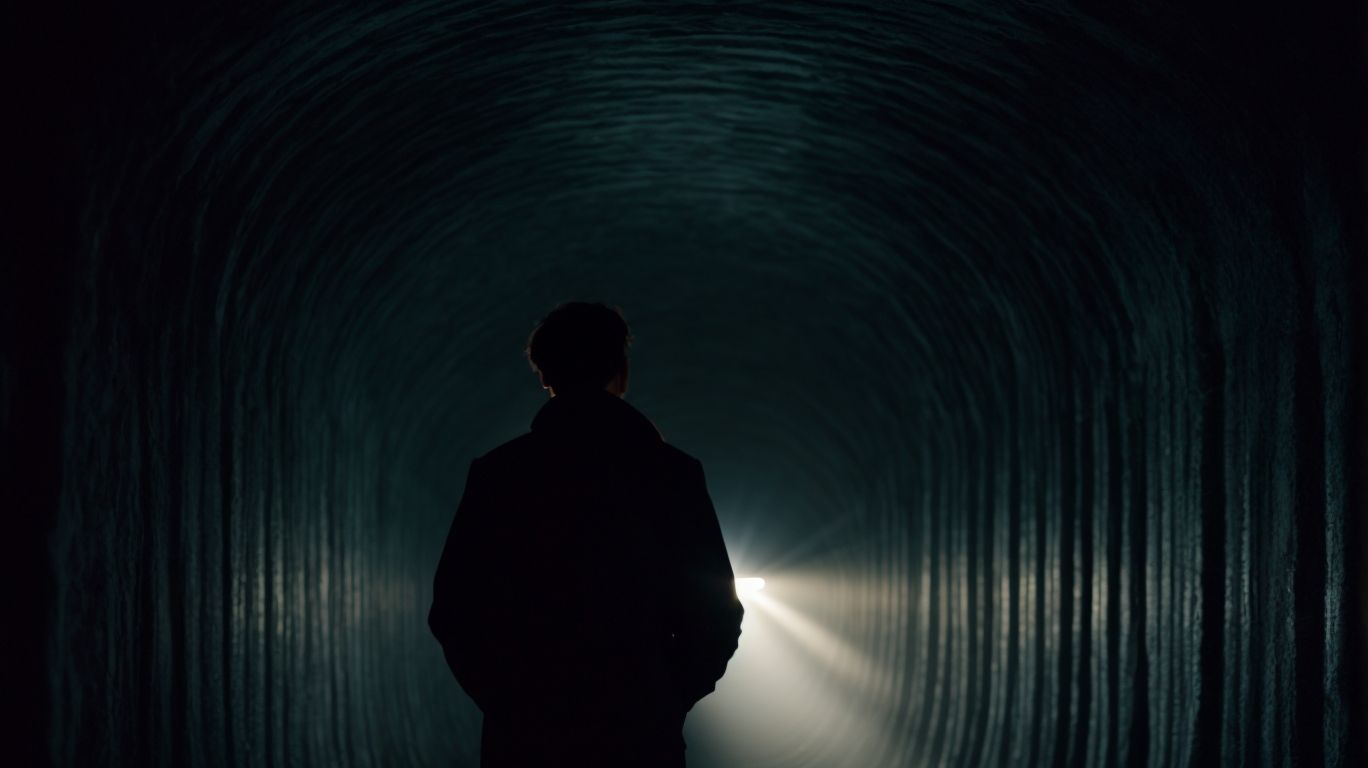Have you heard of “tunnel vision” in psychology? It describes a limited field of vision, often with challenges seeing in dim lighting and blurry peripheral vision.
In this article, we will discuss the causes, symptoms, diagnosis, and treatment options for tunnel vision. From stress and anxiety to medications and trauma, there are multiple factors that can contribute to this condition. Keep reading to discover coping strategies and prevention techniques for managing tunnel vision.
Contents
- 1 Key Takeaways:
- 2 What is Tunnel Vision?
- 3 How Does Tunnel Vision Affect Perception?
- 4 What Causes Tunnel Vision?
- 5 What Are the Symptoms of Tunnel Vision?
- 6 How is Tunnel Vision Diagnosed?
- 7 What Are the Treatment Options for Tunnel Vision?
- 8 Can Tunnel Vision Be Prevented?
- 9 What Are Some Coping Strategies for Tunnel Vision?
- 10 Frequently Asked Questions
Key Takeaways:
- Tunnel vision is a visual impairment that causes a narrowed field of view and difficulty seeing in low light.
- Stress, fatigue, trauma, and medications are common causes of tunnel vision, which can also be a symptom of other underlying conditions.
- Treatment options for tunnel vision include managing underlying causes, vision therapy, assistive devices, and counseling. Coping strategies can also be helpful in managing the condition.
What is Tunnel Vision?
Tunnel vision refers to the perceptual phenomenon where an individual’s field of vision narrows, leading to a restricted visual awareness of their surroundings.
This phenomenon can occur in various contexts, such as high-stakes situations, intense focus, or extreme stress. In sports, athletes may experience tunnel vision during critical moments, where their attention becomes intensely concentrated on specific cues, potentially affecting their overall performance.
From a cognitive neuroscience perspective, tunnel vision can be linked to the activation of the amygdala, the brain’s emotional center, which can override the broader visual processing areas.
In human factors, understanding tunnel vision is crucial for designing environments and interfaces to mitigate its negative impact, especially in fields like aviation, where errors due to restricted visual awareness can have grave consequences.
How Does Tunnel Vision Affect Perception?
Tunnel vision significantly impacts perception by diminishing an individual’s situational awareness and distorting their ability to process and interpret environmental cues effectively, particularly under stressful conditions.
What Causes Tunnel Vision?
Tunnel vision can arise from various factors, including stress, auditory exclusion, and human factors, which contribute to the constriction of visual perception and cognitive processing.
Stress and Anxiety
Stress and anxiety are significant contributors to tunnel vision, particularly in high-risk decision-making scenarios, where the physiological and psychological effects of stress can lead to perceptual narrowing and compromised cognitive performance.
This phenomenon stems from the body’s natural response to perceived threats, triggering the release of stress hormones such as cortisol and adrenaline.
The heightened state of arousal can lead to a narrowed focus on immediate threats, causing individuals to overlook peripheral cues and alternative options.
In high-stakes environments, tunnel vision can hinder the ability to consider a broader range of information and possibilities, ultimately affecting the quality of decisions made.
Fatigue
Fatigue, especially in prolonged or intense activities, can lead to tunnel vision, affecting individuals’ ability to maintain situational awareness and process visual information effectively, as highlighted by the research of Ekua Hagan and other scholars.
Ekua Hagan’s research on the impact of fatigue on perceptual processing has shed light on how tunnel vision can significantly impair a person’s ability to perceive their surroundings accurately.
This phenomenon is particularly relevant in high-stress situations, such as in sport, aviation, or critical decision-making scenarios.
The fields of human factors and cognitive neuroscience have delved into the intricate ways in which fatigue-induced tunnel vision can compromise cognitive functions, leading to decreased attention span, impaired depth perception, and reduced ability to multitask effectively.
Trauma
Traumatic experiences, as highlighted by the extensive research of Dr. Gasaway and other experts, can lead to tunnel vision, impacting individuals’ perceptual processing and situational awareness in the aftermath of intense or distressing events.
This phenomenon has been extensively studied in the realm of cognitive neuroscience and human factors, shedding light on the intricate mechanisms underlying trauma-induced perceptual limitations.
The narrowing of focus that characterizes tunnel vision can hinder one’s ability to perceive peripheral cues and assimilate a comprehensive understanding of the environment.
These perceptual limitations may exacerbate the cognitive load on individuals, impeding their decision-making and response capabilities during critical incidents.
Medications
Certain medications, as evidenced by the findings of Marvin Anderson and related studies, can induce tunnel vision as a side effect, affecting individuals’ visual perception and cognitive processing due to the pharmacological impact on the nervous system.
The research conducted by Marvin Anderson and his peers highlights the noteworthy influence of medications on visual perception. When individuals are subjected to certain medications, the impact on their nervous system can lead to tunnel vision, where their peripheral vision becomes restricted.
This phenomenon, known as tunnel vision, can significantly impair their ability to perceive and process visual information. Studies in cognitive neuroscience and human factors have shed light on the intricate relationship between medication-induced perceptual limitations and cognitive functioning.
Medications may interfere with the brain’s ability to process visual data properly, resulting in tunnel vision – a state where only a narrow field of view is perceivable, potentially hindering one’s ability to perform tasks requiring broader visual awareness.
What Are the Symptoms of Tunnel Vision?
The symptoms of tunnel vision include a narrowed field of view, difficulty seeing in low light conditions, and blurred peripheral vision, all of which reflect the impact of cognitive neuroscience on visual processing and awareness.
Narrowed Field of View
A narrowed field of view is a prominent symptom of tunnel vision, as indicated by the research of D. Klinger and related studies, reflecting the constriction of visual perception and the cognitive neuroscience associated with perceptual limitations.
Tunnel vision results in a restricted visual field, impairing the individual’s ability to perceive objects outside the focus area.
D. Klinger’s studies highlighted how this constrained view influences decision-making processes and interferes with task performance.
Further research in cognitive neuroscience has demonstrated the impact of tunnel vision on attentional control and situational awareness, shedding light on the human factors that contribute to this perceptual phenomenon.
Difficulty Seeing in Low Light
Difficulty in seeing clearly in low light conditions is a common symptom of tunnel vision, as highlighted by the research of Gabbert and other scholars, reflecting the impact of environmental factors on visual perception and cognitive processing.
Studies have shown that individuals experiencing tunnel vision often have reduced peripheral vision, which can be particularly challenging in low light settings.
Gabbert’s research delves into the cognitive neuroscience behind this phenomenon, revealing how the brain’s processing of visual stimuli is affected by narrowed attentional focus.
Human factors such as fatigue and stress can exacerbate this symptom, making it crucial for both researchers and practitioners to consider the complex interplay between environment, cognition, and perception.
Blurred Peripheral Vision
Blurred peripheral vision is a significant symptom of tunnel vision, as evidenced by the findings of Lewinski and related research, indicating the distortion of visual awareness and the cognitive neuroscience associated with peripheral perceptual limitations.
It is important to note that tunnel vision, characterized by the narrowing of the visual field, can lead to the blurring of peripheral vision, impacting an individual’s ability to perceive objects or movement from the corners of their vision.
Lewinski’s research emphasized that this perceptual distortion is not solely a physical phenomenon, but also a result of cognitive processes that influence visual attention and awareness.
In fact, studies in neuroscience have shown that the brain’s processing of peripheral vision involves complex interactions between the visual cortex, attentional networks, and spatial awareness mechanisms. This sheds light on the underlying mechanisms that contribute to the alteration of peripheral perception in tunnel vision.
How is Tunnel Vision Diagnosed?
The diagnosis of tunnel vision involves comprehensive visual and cognitive assessments, often conducted by qualified professionals such as ophthalmologists and cognitive psychologists, as highlighted by the work of Steve and the research of Hope.
What Are the Treatment Options for Tunnel Vision?
The treatment options for tunnel vision encompass managing underlying causes, vision therapy, the use of assistive devices, and counseling and therapy, all aimed at addressing the cognitive neuroscience and human factors contributing to perceptual limitations.
Managing Underlying Causes
Managing underlying causes of tunnel vision is crucial in addressing the perceptual limitations, as emphasized by the research of Ishimaru, R., and other experts, focusing on mitigating the cognitive neuroscience and human factors contributing to visual constriction.
In a study conducted by Ishimaru, R., et al., the researchers identified that tunnel vision, a phenomenon characterized by narrowed visual perception, can be attributed to various factors including attentional biases, cognitive load, and environmental stressors.
It’s imperative to recognize that these underlying causes have a substantial impact on an individual’s ability to process and interpret visual information. By understanding and addressing these factors, it becomes possible to improve visual awareness and expand the scope of visual attention.
Vision Therapy
Vision therapy plays a significant role in the treatment of tunnel vision, as highlighted by the research of Nagata, N., and other scholars, focusing on improving visual processing and mitigating the effects of perceptual limitations.
Studies have shown that vision therapy is effective in enhancing the peripheral visual field and expanding the field of vision, which is essential for individuals with tunnel vision.
Nagata, N., in their research, demonstrated how specific visual exercises and interventions can help individuals with tunnel vision to improve their ability to perceive objects and navigate their surroundings more effectively.
Assistive Devices
The use of assistive devices, as illustrated by the findings of Sisk, VF, and related studies, can aid individuals with tunnel vision in enhancing their visual awareness and compensating for perceptual limitations through technological support.
Assistive devices such as smart glasses, tactile maps, and visual aids have been instrumental in addressing the challenges associated with tunnel vision.
Research by Sisk highlighted the effectiveness of utilizing head-mounted displays to expand the field of view for individuals with visual impairments, thereby promoting their mobility and independence.
The innovative strategies developed by VF have emphasized the significance of personalized assistive devices that cater to the unique needs of individuals with tunnel vision, leveraging cutting-edge technology and human-centered design principles.
This intersection of cognitive neuroscience, human factors, and technological advancements underscores the potential for assistive devices to mitigate the impact of tunnel vision, paving the way for improved perceptual experiences and quality of life for individuals facing visual challenges.
Counseling and Therapy
Counseling and therapy play a vital role in addressing the psychological and emotional aspects of tunnel vision, as emphasized by the work of Burgoyn, EP, and other professionals, highlighting the human factors and cognitive neuroscience associated with mental health support for individuals with perceptual limitations.
These forms of intervention aid individuals in gaining a deeper understanding of their thought patterns, perceptions, and emotional responses, thereby fostering awareness and enabling them to explore alternative perspectives and coping mechanisms.
Through counseling and therapy, individuals can develop effective strategies to mitigate the impact of tunnel vision, ultimately fostering adaptive behaviors and improved emotional well-being.
Can Tunnel Vision Be Prevented?
While tunnel vision may not always be entirely preventable, proactive measures, as pointed out by the research of Sun and other scholars, can help mitigate its occurrence by addressing stress, enhancing situational awareness, and understanding the cognitive neuroscience behind perceptual limitations.
What Are Some Coping Strategies for Tunnel Vision?
Coping strategies for tunnel vision encompass cognitive techniques, environmental adaptations, and stress management methods, as suggested by the research of M.J., Furuya, and other experts, aiming to mitigate the impact of perceptual limitations on daily activities and decision-making.
Frequently Asked Questions
What is tunnel vision in psychology?
Tunnel vision in psychology refers to a cognitive bias where an individual becomes overly focused on a single piece of information or aspect of a situation, while ignoring other relevant information. This can lead to narrow thinking and a limited perspective.
What causes tunnel vision?
Tunnel vision can be caused by a variety of factors, such as stress, fear, and strong emotions. It can also be a result of cognitive overload or a lack of awareness of one’s own biases.
How does tunnel vision affect decision making?
Tunnel vision can have a significant impact on decision making, as it limits the individual’s ability to consider all available information. This can result in impulsive or irrational decisions, as well as missed opportunities or potential risks.
Can tunnel vision be beneficial in any situations?
While tunnel vision is generally seen as a negative cognitive bias, it can sometimes be beneficial in high-stress or emergency situations. In these cases, it can help individuals to focus on one specific task or goal, without being distracted by other factors.
How can one overcome tunnel vision?
Overcoming tunnel vision requires self-awareness and actively challenging one’s own biases. This can involve seeking out diverse perspectives and information, as well as regularly questioning one’s own assumptions and beliefs.
What are some examples of tunnel vision?
Tunnel vision can manifest in various ways, such as only considering one solution to a problem, only seeing things from one perspective, or ignoring warning signs due to a strong belief or desire. For example, a detective may become fixated on a single suspect and overlook other potential leads, leading to a biased investigation.



